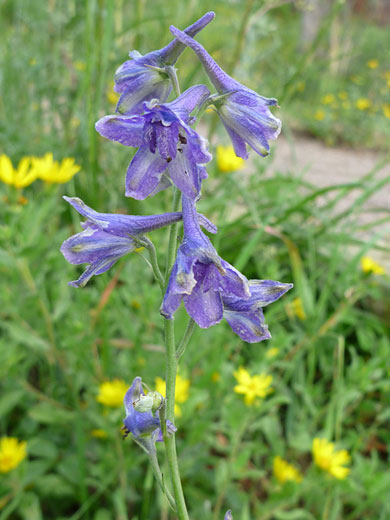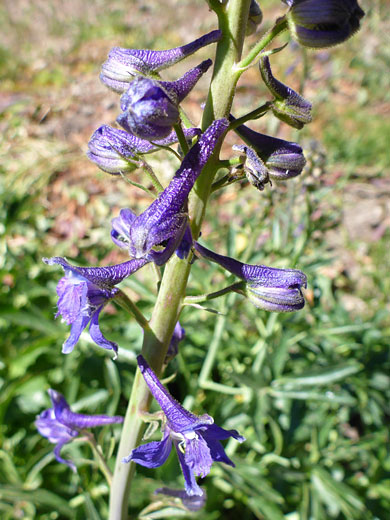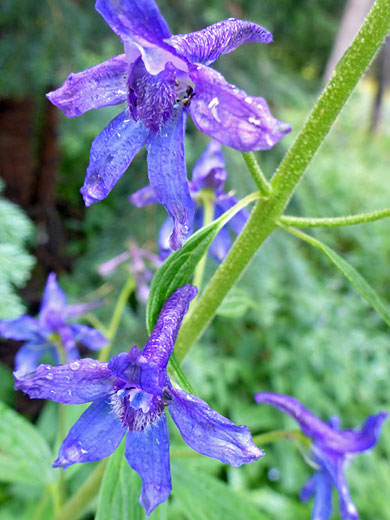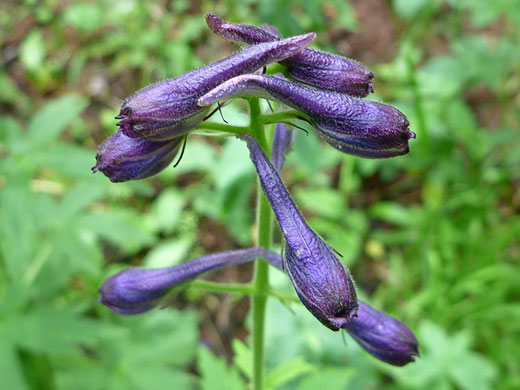Common names:
Subalpine larkspur, tall larkspur
Family:
Scientific name:
Delphinium barbeyi
Main flower color:
Range:
The southern Rocky Mountains (WY, CO, NM), plus parts of Arizona and Utah
Height:
Between 4 and 6 feet
Habitat:
Moist meadows, wet forests, aspen woodland, streamsides; 8,200 to 13,400 feet
Leaves:
Up to 8 inches long, deeply divided into 5 or 7 narrow lobes, each further divided
Season:
June to August
The predominantly blue/purple flowers of delphinium barbeyi grow on the upper portion of the tall, unbranched stems, each borne at the end of a short stalk (pedicel) 2 inches long. Stems have a covering of glandular (sticky) hairs. A mature plant can have many dozen blooms. Flower heads are composed of five dark purple/blue sepals, one projecting backwards to form a spur, and four (sometimes five) much smaller petals. The lower two petals are purple, and are covered by long, thick, white hairs, while the upper pair of petals are pure white, or sometimes yellowish, and hairless.
The large green, alternate leaves are divided several times into thin, pointed lobes; they grow mostly around the base. The plant is highly toxic due to poisonous alkaloid compounds. White-flowered specimens are sometimes spotted. The upwards-pointing seed pods are green to purple and hairless, with black or purple spikes at the tip.
The large green, alternate leaves are divided several times into thin, pointed lobes; they grow mostly around the base. The plant is highly toxic due to poisonous alkaloid compounds. White-flowered specimens are sometimes spotted. The upwards-pointing seed pods are green to purple and hairless, with black or purple spikes at the tip.
All Contents © Copyright The American Southwest | Comments and Questions | Contribute | Site Map

















